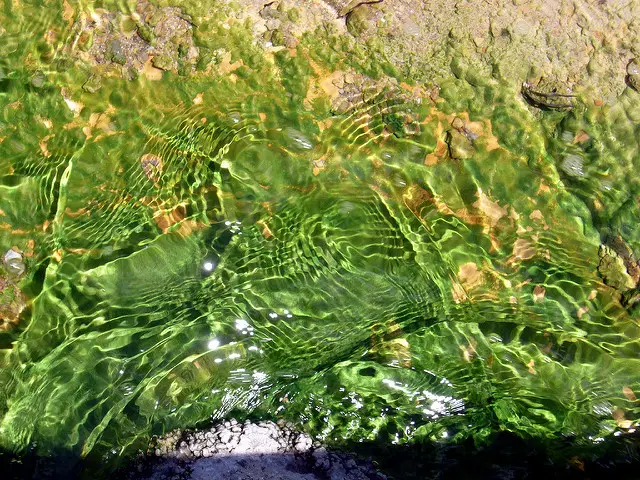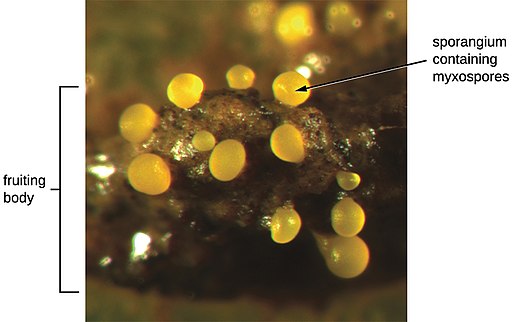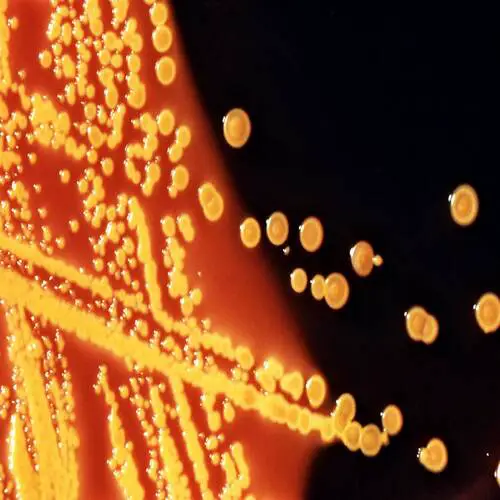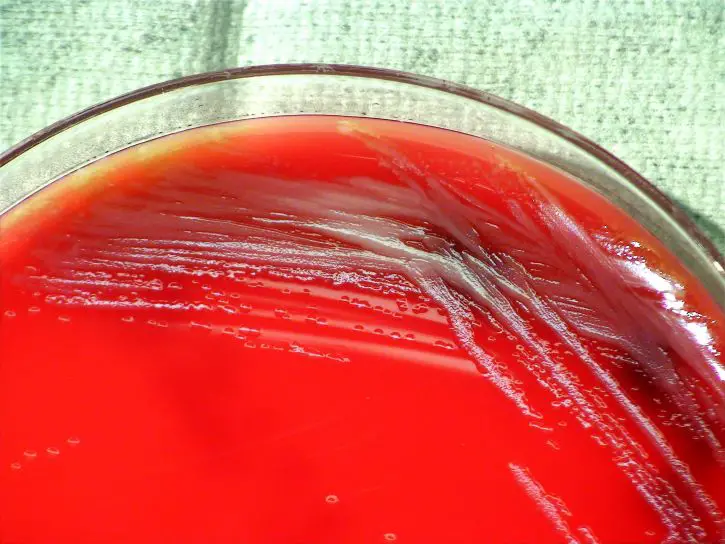Autotrophs
** Definition, Types, Examples and Vs Heterotrophs
What are Autotrophs?
Autotrophs are any organisms that are capable of producing their own food. For most, this is achieved by using light energy, water and carbon dioxide. Rather than using energy from the sun, some will use chemical energy to make their own food.
All autotrophs use non-living material (inorganic sources) to make their own food. Because of their ability to make their own food, autotrophs are also commonly refered to as primary producers and thus occupy the base of the food chain. They vary widely from those found on land (soil) to those that live in aquatic environments.
Some examples include:
- Algae
- Cyanobacteria
- Maize plant
- Grass
- Wheat
- Seaweed
- Phytoplankton
* Food chain - Food chain refers to a linear sequence through which food energy is transferred when one organism consumes another. This chain is divided into different trophic/nutritional levels.
Since autotrophs do not depend on organic matter and are capable of making their own food from inorganic sources, they occupy the base of the food chain (first trophic/nutritional level) with herbivores and carnivores (as well as omnivores) occupying the second and third trophic levels respectively.
Types of Autotrophs
While there are a wide variety of organisms that are classified as autotrophs, there are two main types based on how they produce their food. These organisms live in different environments and use different mechanisms (and material) to produce energy.
The two types are:
- Photoautotroph
- Chemoautotroph
Phototrophs/Photoautotrophs
Basically, phototrophy involves the use of light energy (from the sun) for photosynthesis. Here, light energy obtained from the sun is used to produce food material (organic material) from carbon-dioxide and water.
Most of the organisms that use this method to produce food have chloroplast (membrane bound) as well as a membrane bound nucleus. As such, they are eukaryotic organisms.
There are various prokaryotes that are also capable of photosynthesis. This includes a number of bacteria.
Examples of phototrophs/photoautotroph include:
- Higher plants (maize plant, trees, grass etc)
- Euglena
- Algae (Green algae etc)
- Bacteria (e.g. Cyanobacteria)
* All photoautotrophs have chlorophyll (other equivalent pigments that allow them to absorb light energy) that allows them to capture light energy
* Cyanobacteria are the only type of bacteria that can produce oxygen during photosynthesis while other bacteria cannot. Reasons for this will be explained below in detail.
Phototrophs and Photosynthesis
As mentioned, all photoautotrophs have chlorophyll. While some like cyanobacteria may not have a chloroplast that contains the chlorophyll, they have chlorophyll in place to capture light energy to be used for photosynthesis.
In higher plants, photosynthesis takes place in the mesophyll layer of the leaf where chloroplasts are located. Carbon-dioxide required for photosynthesis gets into the mesophyll layer and into the chloroplast through small openings on the leaves known as stomata.
Typically, these openings are located underside of leaves to minimize water loss during transpiration. Whereas carbon-dioxide is taken in through the stomata, water is absorbed through osmosis from the soil (by specialized root hairs). Water is then transported to the leaves (and other parts of the plant) through the xylem (one of the plants vascular tissues).
Within the chloroplast, chlorophyll is located in the innermost membrane known as the thylakoid membrane. This pigment captures/absorbs the red and blue wavelengths of light (visible spectrums) that produces the energy required for photosynthesis.
Brief Summary of Photosynthesis
Photosynthesis occurs in two main phases, these include:
Light-Dependent Phase (Light Dependent Reactions)
This is the first phase of the photosynthesis and takes place in the thylakoid membrane of the chloroplast.
Here, two photosystems known as Photosystem I and Photosystem II (PSI and PSII) have a variety of pigments including chlorophyll molecule that absorb light energy. This provides energy required to move electrons from water molecules through the photosystems to make NADPH (Nicotinamide adenine dinucleotide phosphate) and ATP (Adenosine triphosphate).
The first phase of photosynthesis is refered to as light dependent because it only takes place in the presence of sunlight. The primary purpose of this phase is to convert light energy from the sun into chemical energy (ATP and NADPH). Using this chemical energy, plants are then able to synthesis organic material such as sugars.
Light-Independent Reactions
In plants, the light-independent reactions take place in the absence of sunlight. Because the first phase (light dependent reactions) successfully produced energy in the form of ATP and NADPH, sunlight is no longer required given that these sources of energy provide the required energy for sugar synthesis. Here, the Calvin cycle is used to describe the light-independent reactions.
In the Calvin cycle, carbon-dioxide combines with ribulose-1, 5-bisphosphate (RuBP) in the presence of RuBP carboxylase/oxygenase, (RuBisCo) enzyme to produce two molecules of 3-phosphoglyceric acid (3-PGA) which is a three-carbon compound. This is the first stage of light-independent reaction and is known as carbon fixation.
The second phase is known as reduction and requires ATP and NADPH. In this stage, the two energy sources provide the energy required to convert 3-phosphoglyceric acid into glyceraldehyde-3-phosphate (G3P) which is a three-carbon sugar.
Lastly, in the third stage known as regeneration, some molecules of glyceraldehyde-3-phosphate are used to produce sugar molecules (glucose) while others are recycled in order to regenerate RuBP for more reactions. This stage is fueled by ATP which acts as the source of energy.
Chlorophyll
For photoautotrophs, chlorophyll is a very important pigment. This is because it helps capture sunlight that is then used during photosynthesis. All organisms that carry out photosynthesis have chlorophyll.
There are two main types of chlorophyll including:
Chlorophyll a - Chlorophyll a is the most common chlorophyll and can be found in the majority of the photoautotrophs including cyanobacteria, higher plants and algae. Chlorophyll (a) captures blue-violet and orange-red light (at 675nm) while reflecting green light (thus appearing green in color). Energy from these wavelengths is then used for photosynthesis.
Chlorophyll b - Chlorophyll b is common in algae and plants and captures green light (at 640 nm). In the organisms in which it is found, chlorophyll b passes energy from the light to chlorophyll a thus acting to complement chlorophyll a. It is particularly useful when there is little light given that absorbs a broader spectrum than chlorophyll a. As a result, it is produced in plenty during cases where sunlight is limited.
* Depending on the amount of light available, chlorophyll may be oxidized to produce chlorophyll b
Anoxygenic Photosynthesis
During photosynthesis, photoautotrophs use carbon dioxide and water to produce sugar molecules and oxygen. This reaction is powered by light energy (light energy is used to produce chemical energy).
Photosynthesis can be presented using the following formula:
6CO2 (carbon dioxide) + 6H2O (water) C6H12O6 (glucose sugar) + 6O2 (oxygen)
This reaction is common among many higher plants, algae as well as cyanobacteria. While cyanobacteria are capable of producing oxygen and sugar as the final product, other bacteria are not capable of producing oxygen. As a result, cyanobacteria are the only bacteria that have been shown to be capable of producing oxygen during photosynthesis.
Bacteria that do not produce oxygen during photosynthesis are known classified as obligate anaerobes while they produce through a process refered to as anoxygenic photosynthesis.
Some of the organisms that use this mechanism to produce include:
- The purple bacteria
- Green sulfur bacteria
- Heliobacteria
- Chloroflexi
While these organisms use light energy to produce their own energy, they do not use water as the source of protons. Rather, such gases as hydrogen sulfide are used for reduction. For such organisms as green sulfur bacteria, such pigments as bacteriochlorophyll (a) and (b) absorb light energy that is then used or photosynthesis reaction.
Chemotrophs
Whereas photoautotrophs obtain their energy from the sun, chemotrophs do not need the sun and thus obtain their energy from various molecules available in their environment.
Chemotrophs are divided into two groups including chemoorganotrophs (use organic molecules as a source of energy) and chemolithotrophs that use inorganic molecules. Here, we shall focus on chemolithotrophs given that they do not use organic molecules to produce energy.
These organisms are also known as lithotrophs and include various bacteria including the nitrifying bacteria and bacteria found in tube worms in deep sea levels. While these organisms live in environments where there is no sunlight, there is sufficient inorganic material for biosynthesis.
Essentially, biosynthesis involves the oxidation of the inorganic material. Here, chemolithotrophs (cells) take in the electron donor (iron, elemental sulfur and hydrogen sulfide etc) which are then oxidized to produce energy.
For instance, the oxidation of hydrogen sulfide produces electrons that are transported through the electron transport chain for oxidative phospholyration that produces ATP energy. The chemical energy in form of ATP is then used in biosynthesis to fix carbon in order to produce organic compounds.
* This process is different from photosynthesis where autotrophs are able to produce their own energy by using energy from the sun (sunlight). Because chemolithotrophs do not have access to sunlight, they have to rely on inorganic material in their environment.
Importance
As mentioned, autotrophs are primary producers and therefore occupy the base of the food chain at the first trophic level. This makes them very important in nature given that every other organism that is not a primary producer relies on them for their survival. For instance, herbivores rely on plants for their energy and eat various plants (grass, corn, leaves etc) as their source of food.
Carnivores and omnivores are dependent on plants and meat as their source of food and energy. Without autotrophs, which are the primary producers, all these other organisms at the higher trophic levels would not survive because the food chain as a whole is dependent on the primary producers.
Apart from simply being the source of food and energy, they are also important in other ways. The Thioautotrophic bacteria that live in the giant tube worm (Riftia pachyptila) uses hydrogen sulfide (oxidation) to produce NADPH and ATP that is then used to synthesis organic material. This is used as the source of energy by the worm.
This is a symbiotic relationship that allows the two organisms to live and benefit each other. Here, therefore, this type of autotrophy benefits organisms that live in tough environments such as the deep sea.
Difference between Heterotrophs and Autotrophs
There are a number of differences between heterotrophs and autotrophs, these include:
Autotrophs (for the most part) use inorganic material to produce organic compounds while heterotrophs cannot - Whereas they use such material as carbon-dioxide and water to produce such organic compounds as glucose, heterotrophs are simply consumers that require organic material (organic compounds) as their source of energy.
Autotrophs (phototrophs) have chloroplast or chlorophyll or the equivalent of chlorophyll pigments while heterotrophs do not - They need these pigments for the purposes of absorbing light energy for photosynthesis.
Because heterotrophs cannot carry out this process, they do not have nor require these pigments. Autotrophs that do not use light energy do not have these pigments, but can use inorganic material to make their own food as a source of energy
Carbon dioxide – a majority of autotrophs need carbon-dioxide to synthesis their own food as a source of energy. That is, carbon-dioxide is for the most part the source of carbon that is required to produce carbon based molecules (organic molecules like glucose).
Carbon dioxide does not serve the same purpose in heterotrophs like human beings, cows or pigs etc (in such heterotrophs, carbon-dioxide helps with such functions as vasodilation etc).
Return to Eukaryotes and Prokaryotes
Return from Autotrophs to MicroscopeMaster Home
References
Alan R. Hemsley and Peter Robert Bell. Green
Plants: Their Origin and Diversity. Originally published: 28 September 2000.
Beale, Samuel I. "Enzymes of Chlorophyll Biosynthesis." Photosynthesis Research 60 (1999): 43-73.
Links
https://www.nationalgeographic.org/encyclopedia/autotroph/
Find out how to advertise on MicroscopeMaster!
![Food Web by Thompsma [CC0], from Wikimedia Commons Food Web by Thompsma [CC0], from Wikimedia Commons](https://www.microscopemaster.com/images/415px-FoodWeb.jpg)

![Chlorophyll Fluorescence by Dietzel65 [CC BY-SA 4.0 (https://creativecommons.org/licenses/by-sa/4.0)], from Wikimedia Commons Chlorophyll Fluorescence by Dietzel65 [CC BY-SA 4.0 (https://creativecommons.org/licenses/by-sa/4.0)], from Wikimedia Commons](https://www.microscopemaster.com/images/Plagiomnium_undulatum_fluorescence.jpg)




